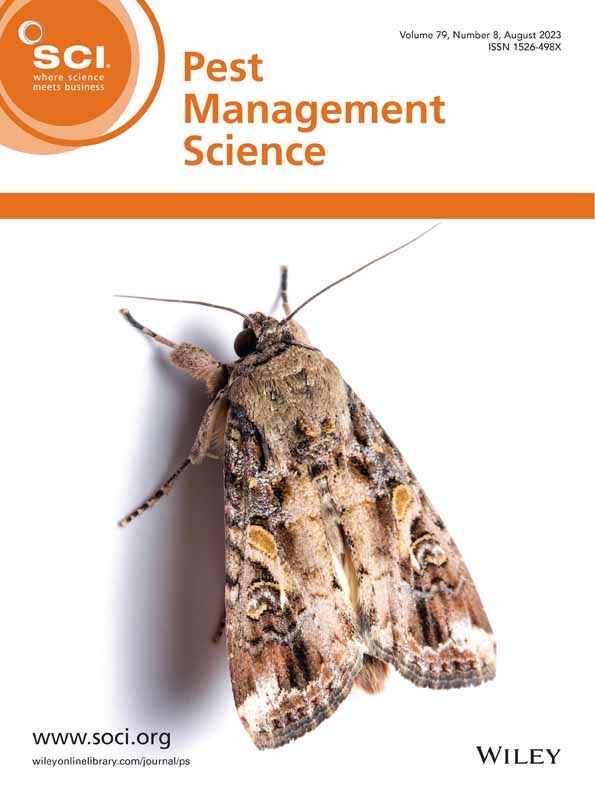Ver ítem
- xmlui.general.dspace_homeCentros Regionales y EEAsCentro Regional Patagonia NorteEEA BarilocheArtículos científicosxmlui.ArtifactBrowser.ItemViewer.trail
- Inicio
- Centros Regionales y EEAs
- Centro Regional Patagonia Norte
- EEA Bariloche
- Artículos científicos
- Ver ítem
Honeydew production by the giant willow aphid (Tuberolachnus salignus, Hemiptera: Aphididae) and its effect on foraging yellowjackets (Hymenoptera: Vespidae)
Resumen
BACKGROUND: Understanding the factors that promote the success of invasive species is important for managing biological invasions. Interactions between invasives and other species (e.g. competitors, pathogens, or predators), could favor or limit their success. In recent decades, yellowjacket wasps, including Vespula germanica and Vespula vulgaris, have successfully established in Patagonia. Additionally, the invasive willow Salix fragilis has invaded
[ver mas...]
BACKGROUND: Understanding the factors that promote the success of invasive species is important for managing biological invasions. Interactions between invasives and other species (e.g. competitors, pathogens, or predators), could favor or limit their success. In recent decades, yellowjacket wasps, including Vespula germanica and Vespula vulgaris, have successfully established in Patagonia. Additionally, the invasive willow Salix fragilis has invaded areas next to watercourses, which in turn are typically colonized by the giant willow aphid (GWA, Tuberolagnus salignus), an additional species characterized as a successful invader in many regions worldwide. Aphid exudate (honeydew) has been reported to be used as a carbohydrate source by social wasps. The aim of our study was to gain a better understanding of the infestation pattern of the GWA in north-western Patagonia, its effect on exudate availability and its relationship with yellowjacket foraging patterns. The study was conducted under the working hypothesis that the increase in the size of GWA colonies and resulting honeydew production, will fuel an increase in local Vespula spp. populations.
RESULTS: We found that the aphid honeydew is produced in relatively high amounts in the region (estimated at 1517 139 kg/ha/season), with strong indications that it is used by yellowjackets because of the significantly higher abundance levels of yellowjackets foraging on honeydew compared to nearby areas.
CONCLUSION: Given its effect on yellowjacket foraging behavior, the interaction of these three invasive species, willows, GWA and yellowjackets, needs to receive special attention to develop future environmentally-sound mitigation tools of these nuisance pest. © 2023 Society of Chemical Industry.
[Cerrar]

Autor
Martinez Von Ellrich, Andres;
Villacide, Jose Maria;
Buteler, Micaela;
Serra, María Noel;
Masciocchi, Maite;
Fuente
Pest Management Science 79 (8) : 2912-2919. (August 2023)
Fecha
2023-08
Editorial
Wiley
ISSN
1526-498X
1526-4998
1526-4998
Documentos Relacionados
Formato
pdf
Tipo de documento
artículo
Proyectos
(ver más)
INTA/2019-PE-E1-I017-001/2019-PE-E1-I017-001, DESARROLLO DEL SECTOR APÍCOLA ORGANIZADO, SUSTENTABLE Y COMPETITIVO
INTA/2019-PD-E4-I079-001/2019-PD-E4-I079-001, Genética, genómica y ecología de insectos de importancia agronómica como insumo para el desarrollo de estrategias sustentables de control plagas
Palabras Claves
Derechos de acceso
Restringido
 Excepto donde se diga explicitamente, este item se publica bajo la siguiente descripción: Creative Commons Attribution-NonCommercial-ShareAlike 2.5 Unported (CC BY-NC-SA 2.5)
Excepto donde se diga explicitamente, este item se publica bajo la siguiente descripción: Creative Commons Attribution-NonCommercial-ShareAlike 2.5 Unported (CC BY-NC-SA 2.5)


